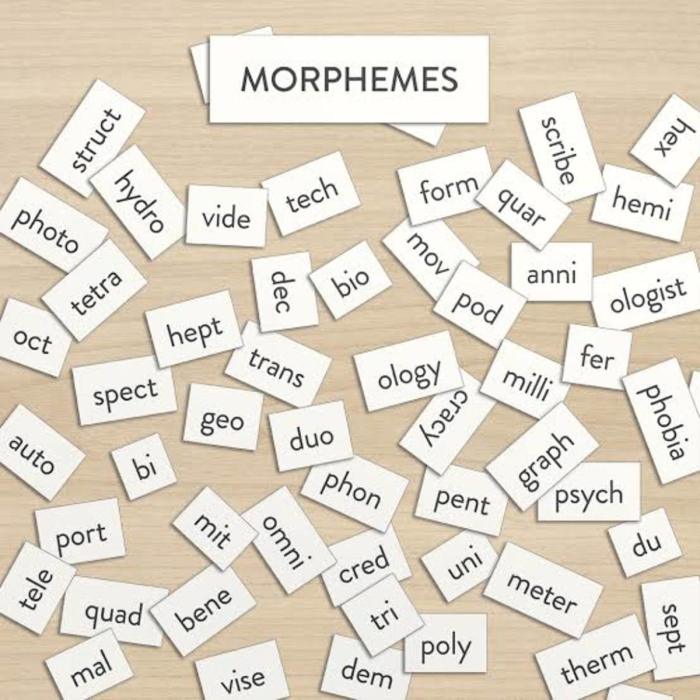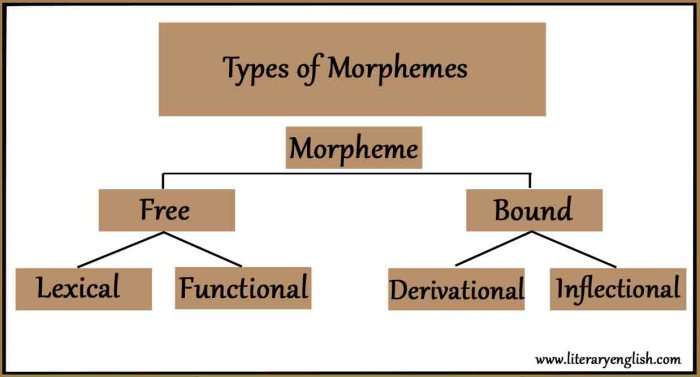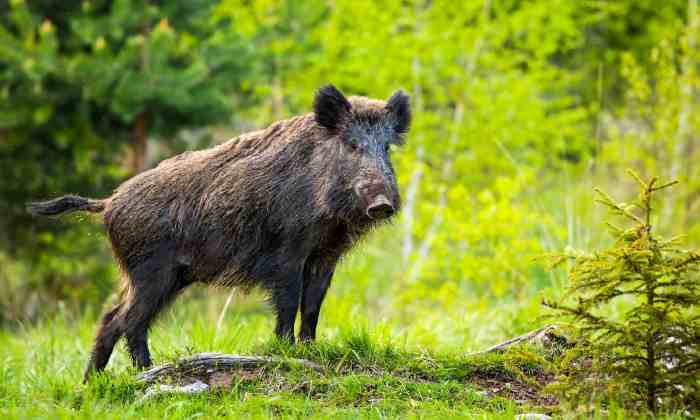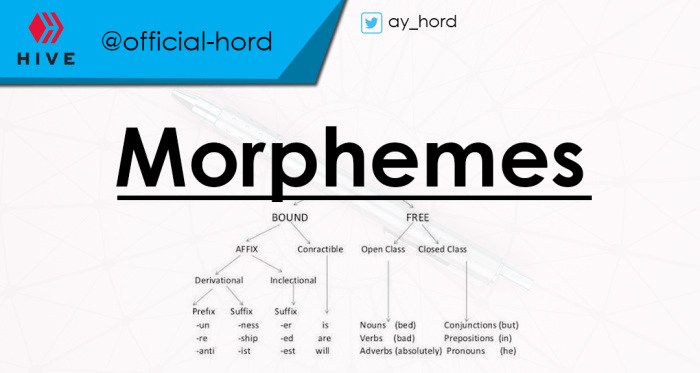How many morphemes in hogs? Delve into the captivating realm of linguistics as we embark on a journey to unravel the intricate web of morphemes that constitute this fascinating word. Brace yourself for an enthralling exploration of the building blocks of language, where each morpheme holds a unique meaning and function.
Prepare to uncover the secrets of morphemes, their diverse types, and their profound impact on word formation. Join us on this linguistic adventure as we dissect the morphemic structure of “hogs,” revealing the hidden layers of meaning that lie within this seemingly simple term.
Morphemes in the Word “Hogs”

In linguistics, a morpheme is the smallest unit of meaning in a language. It can be a word, a part of a word, or even a single sound. Morphemes can be combined to form new words, and they can also be changed to create different forms of a word.
The word “hogs” has two morphemes: “hog” and “-s”. The morpheme “hog” is the root of the word, and it means “a large pig.” The morpheme “-s” is a plural suffix, and it means “more than one.” So, the word “hogs” means “more than one pig.”
Meaning and Function of Each Morpheme
- Morpheme:hog Meaning:a large pig Function:root of the word
- Morpheme:-s Meaning:more than one Function:plural suffix
Types of Morphemes

Morphemes can be categorized into different types based on their structure and function. The three main types of morphemes are root morphemes, affixes, and bound morphemes.
Root Morphemes
Root morphemes are the core meaning-carrying units of words. They cannot be further divided into smaller meaningful units. For example, in the word “hog,” the root morpheme is “hog,” which means “a large domestic pig.”
Morphemes are linguistic units that can’t be broken down into smaller meaningful parts, like the plural “-s” in “hogs.” Speaking of the US Navy, did you know about their extensive system of flags and pennants ? It’s fascinating how they use these visual signals to communicate.
But getting back to hogs, the word has two morphemes: “hog” (the base word) and “-s” (the plural morpheme).
Affixes, How many morphemes in hogs
Affixes are morphemes that are added to root morphemes to change their meaning or grammatical function. Affixes can be prefixes, which are added to the beginning of a word, or suffixes, which are added to the end of a word.
For example, in the word “hogs,” the suffix “-s” is an affix that indicates plurality.
Bound Morphemes
Bound morphemes are morphemes that cannot stand alone as words. They must be attached to a root morpheme or another affix. For example, in the word “hogs,” the bound morpheme “-s” is attached to the root morpheme “hog” to indicate plurality.
Morphemes in the Word “Hogs”
The word “hogs” contains two morphemes:
- Root morpheme: hog (meaning “a large domestic pig”)
- Suffix: -s (indicates plurality)
Morphological Analysis

Morphological analysis is the process of breaking down words into their constituent morphemes, which are the smallest units of meaning in a language. This analysis is essential for understanding the structure and meaning of words, as well as how they are formed and used in language.
To perform morphological analysis on the word “hogs,” we can follow these steps:
Step 1: Identify the Root Morpheme
The root morpheme is the core meaning of the word. In “hogs,” the root morpheme is “hog,” which means “a large pig.”
Step 2: Identify the Affixes
Affixes are morphemes that are added to the root morpheme to change its meaning or grammatical function. In “hogs,” there is one affix, the plural suffix “-s.” This affix indicates that there is more than one hog.
Step 3: Construct the Morphemic Structure
The morphemic structure of “hogs” can be represented as follows:
| Morpheme | Meaning |
|---|---|
| hog | a large pig |
| -s | plural |
Morphological Productivity

Morphological productivity is a concept that explores the ability of a language to create new words and forms from existing morphemes. It refers to the capacity of a language’s morphological system to generate novel words or inflected forms through the combination of morphemes.
The morphological productivity of morphemes is crucial for language as it allows for the expansion of vocabulary and the expression of new concepts and ideas. A language with high morphological productivity can create numerous words from a limited set of morphemes, enhancing its expressive power and communicative potential.
Morphological Productivity of “Hogs”
In the word “hogs,” we observe the presence of two morphemes: “hog” (the root) and “-s” (the plural suffix). The morpheme “hog” carries the core meaning of the word, referring to a pig, while the morpheme “-s” indicates the plural form, denoting multiple pigs.
The morpheme “-s” is a highly productive suffix in English, as it can be attached to a wide range of nouns to form their plural forms. This productivity allows us to create new plural forms for new nouns that enter the language, ensuring the language’s adaptability and flexibility in expressing plurality.
The morpheme “hog” is also productive, as it can be combined with other morphemes to form new words and derive their meanings. For instance, we can add the prefix “wild-” to “hog” to create the word “wild hog,” referring to a type of pig that lives in the wild, or the suffix “-ish” to form “hoggish,” which means “like a hog” or “greedy.”
The morphological productivity of the morphemes in “hogs” contributes to the expressive power of the English language. It allows us to create new words and forms to convey specific meanings and nuances, expanding our vocabulary and enhancing our ability to communicate effectively.
Expert Answers: How Many Morphemes In Hogs
What is a morpheme?
A morpheme is the smallest unit of meaning in a language.
How many morphemes are in the word “hogs”?
There are two morphemes in the word “hogs”: “hog” (root morpheme) and “s” (plural morpheme).
What is the function of the morpheme “s” in the word “hogs”?
The morpheme “s” indicates that the word is plural, meaning there is more than one hog.

